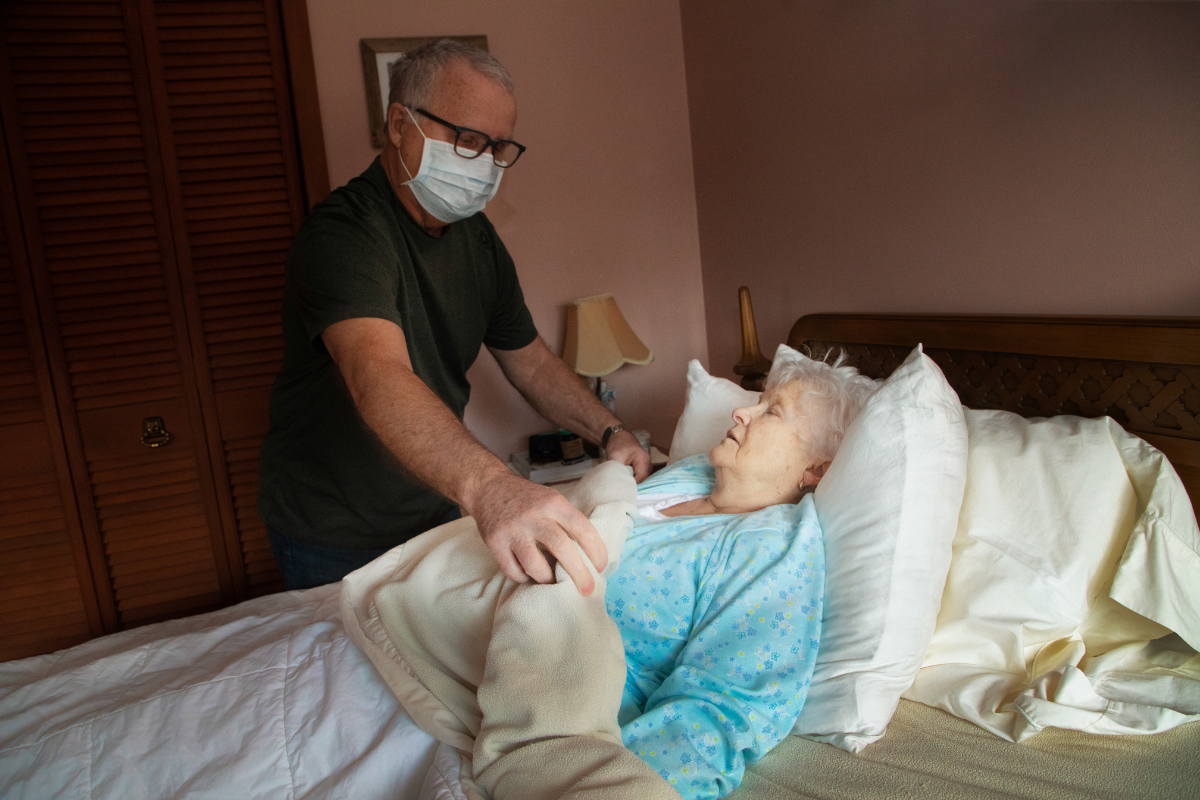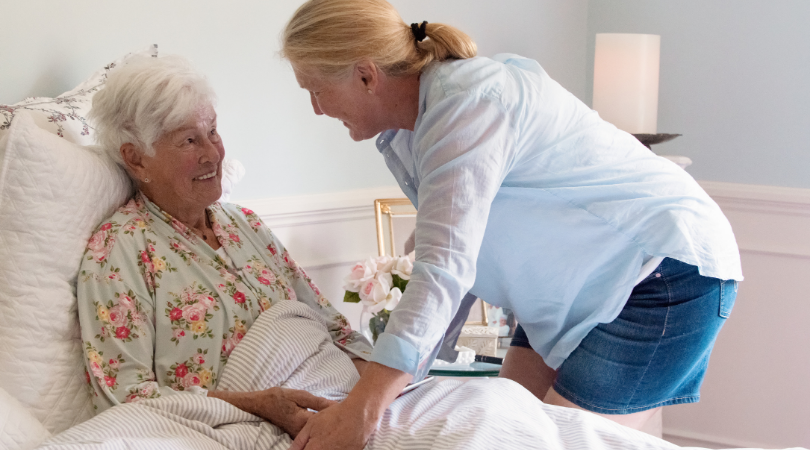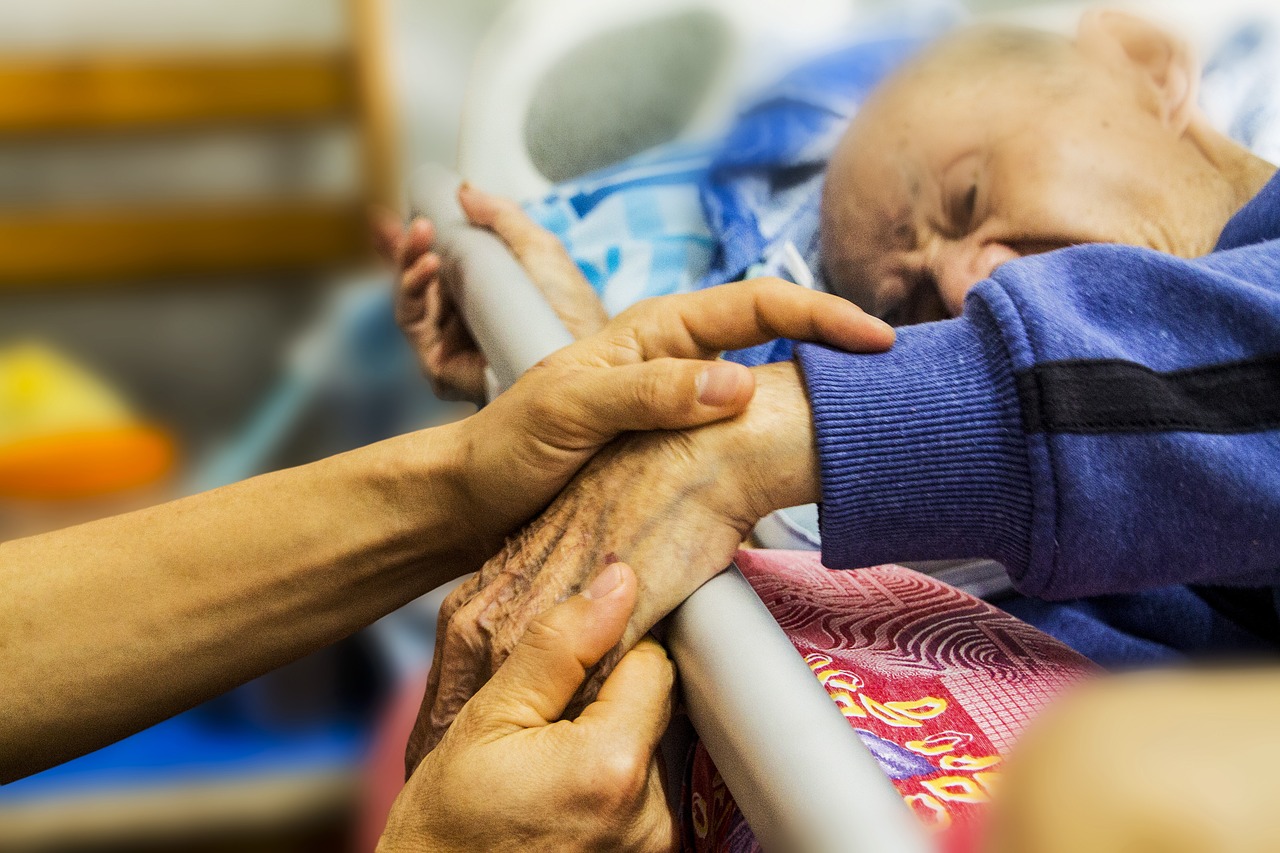How to Reposition a Bedbound Patient

When caring for a loved one at home, a family caregiver will need to learn some routine caregiving skills that will help keep their loved one comfortable. One important skill is how to reposition a bed-bound patient. You may have never thought about how to turn an adult over in bed before, but lying in one position can cause painful pressure injuries.
Learning how to reposition a bed-bound patient is also helpful if you need to assist with a bedpan, change a bandage, or remake the bed with clean sheets. Repositioning bed-bound patients can also help with breathing problems caused by COPD, pneumonia, cystic fibrosis, and other conditions.

How to Get Started
Always begin by asking your loved one if you can help adjust them into another position. Even if they seem to be unconscious, you should announce your intention to move them.
Ensure privacy by closing doors or curtains to protect your loved one’s dignity. You should offer this kindness even if they don’t appear to be awake or conscious.
Next, remove any items that might be damaged or get in the way like pillows, extra blankets, books, eyeglasses, and any wires or tubes attached to medical equipment.

How to Reposition a Bed-Bound Patient if They Have Some Mobility
If your loved one has some mobility, they can help with the repositioning process.
Have your loved one move to one side of the bed while you move to the side they will roll toward.
Ask them to lie on their back with knees bent and arms folded across their body.
Have them roll towards you as they keep their knees bent.
Guide them towards you with your hands placed gently on their shoulders and hips.

How to Reposition a Bed-Bound Patient if They Have Limited Mobility
If a loved one can’t move on their own, their position should be adjusted every two hours. If possible, have someone help you. A drawsheet will also make this task easier for both you and your loved one.
A draw sheet is a bed sheet that is placed across the width of the bed over the area where the person’s upper back and thighs will lay. You can purchase a draw sheet made of plastic or rubber for added incontinence protection or you can use a regular bed sheet folded in half.
When you are ready to turn your loved one, have one person stand on each side of the bed. Make sure your loved one’s hands and feet are comfortably positioned so they won’t slide under their body and be hurt.
Next, each person should gather up their side of the draw sheet and make sure it will comfortably support your loved one. Together, lift and move your loved one to one side of the bed. Tuck the draw sheet in on the opposite side.
Now help your loved one to lie on their back with their knees bent. If they cannot comfortably bend their knees, cross one ankle over the other in the direction you will be turning them. Gently position their arms across their body.
Now reach over your loved one and grasp the draw sheet. Slowly pull the drawsheet towards you, gently rolling your loved one over as you do so. As you do this, your partner should gently push your loved one’s hips and shoulders to help with the roll.
How to change the bed sheets with someone in bed.

Finishing the Task
Once your loved one is in the new position, use pillows to provide extra comfort and support.
If your loved one is on their side, you can place pillows in front of them with an arm around a pillow for extra support. You can also add a body pillow behind their back to keep them from rolling back. You can also add a pillow between your loved one’s slightly bent knees for added comfort. Add a pillow under their bottom ankle and make sure their top leg is in front of the bottom leg to take pressure off the bottom leg. You should also make sure their shoulders are comfortably positioned and not turned back under their body.
If your loved one is laying on their back, put a pillow under their legs between their knees and ankles. Their heels should rest on the bed. If the bed is adjustable, keep the angle under 30 degrees to ensure that your loved one won’t slide down.
Once your loved one is comfortably positioned, recover them with their blankets.
While this can all seem intimidating, once you know how to reposition a bed-bound patient, it becomes a routine task that greatly adds to your loved one’s comfort.
Crossroads Hospice & Palliative Care provides support to family caregivers when they need it most. To learn more about hospice services, please call 1-888-564-3405.
If you found this information helpful, please share it with your network and community.
Copyright © 2021 Crossroads Hospice & Palliative Care. All rights reserved.




